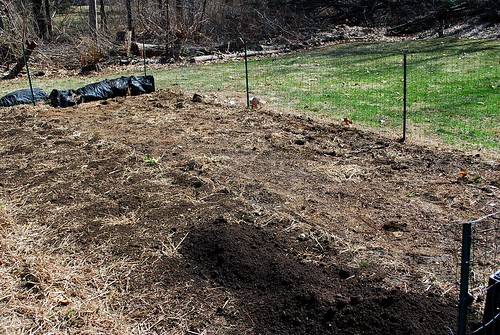
On Saturday, we decided to do some work in the back garden. Those of you who've followed my blog for a while now will remember that I'd taken the lazy gardener's approach to setting up this space last May. Instead of breaking my back trying to remove a well established lawn (and destroying most of the topsoil in the process), I decided to let Mother Nature do the slow work of it for me. I'd used a not so mighty rototiller to break ground on my first garden the previous summer and was not interested in repeating the process.
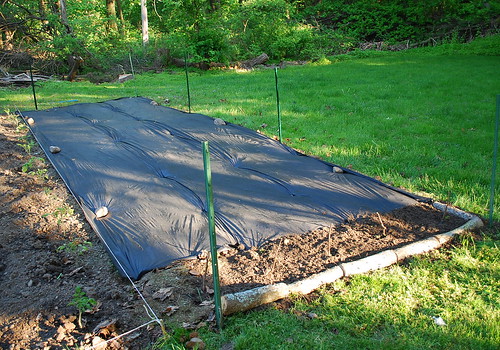
Anyway, here's a reminder of how this space looked like last May. (You can read about it here.) I'd laid a thick layer of dead leaves followed by grass clippings before covering the entire space with some porous landscape fabric and leaving the old lawn to break down slowly over the course of a year. The melons planted here also benefited from the added warmth generated by the black fabric and natural processes happening underneath.
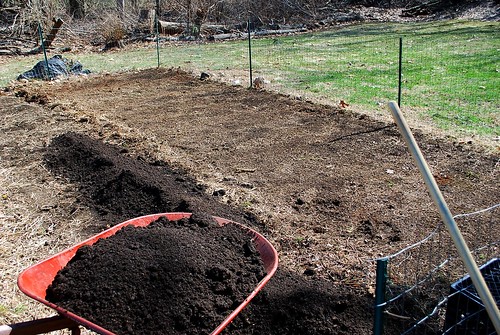
As you can imagine, I was really anxious to find out whether or not this method had worked and to what extent. When I removed the plastic, I noticed immediately how different the soil looked. I raked away some leftover debris from the surface and then poked into the ground with my garden fork. Amazingly, no traces of lawn (roots and all) or leaves remained. The topsoil also felt light and crumbly. Needless to say, I was beyond stoked - so much so that I decided against turning over the soil as I wanted keep the structure intact. (I always kill too many worms in the process anyway.) Anyway, I would definitely recommend this slow method of lawn removal.

After initial inspection, we then went about the task of covering the new beds with 2 cubic yards of compost. I really hope the tomatoes, corn, cukes, melons, artichokes and potatoes we grow here will benefit greatly from this. And since it will be at least May before we plant anything in this space, we'll have plenty of time to make it look a bit prettier. Next weekend, I'll have to take down the beat-up fence and put it back up again (properly this time).
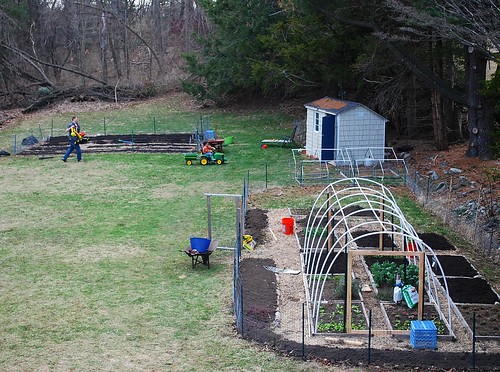
I hope you all had a fun time gardening this weekend. We sure did and the weather was definitely perfect for it.
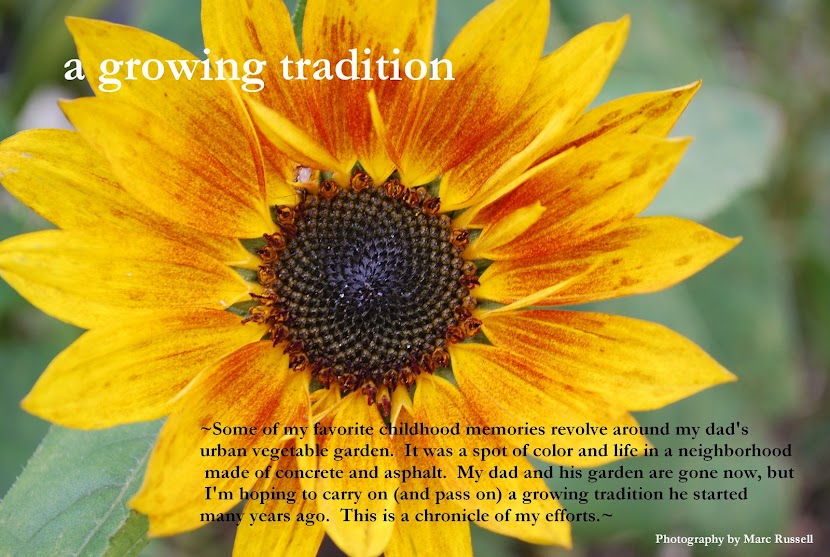





Awesome! I'm glad it worked out so well for you.
ReplyDeleteLooks wonderful. We had a lot of fun gardening. That soil look like black gold.
ReplyDeleteBeautiful compost, Thomas....I bet your garden will be very happy...
ReplyDeleteI am so excited for you! The back garden looks like it has been established for years. The compost you are adding is absolutely beautiful.
ReplyDeleteI don't think that's the lazy way...I think it's the best way to establish a new garden. Unlike the plots, I did not disturb the ground here when I started my beds. I think it's very healthy for the soil that way.
ReplyDeleteIt looks like your "Little Guy" is having alot fun on his tractor!!
Beautiful Compost!!
I'm a huge fan of the black plastic method!
ReplyDeleteIn the past, I've also just cut small squares of sod, flipped them upside down, and then added a bit of compost on top. The grass and roots decompose and add to the soil further down. It is still a lot of work, but not as difficult as cutting the sod and shaking off the soil.
I made my first garden that way too. Well I didn't have the landscape fabric, but I did cover it in about a foot of leaves.
ReplyDeleteLazy way!!! You're kidding me. You're the best, Thomas.
ReplyDeleteIt looks fantastic and you should be pleased looking at how wonderful the 'experiment' turned out..beautiful soil. In a few years I expect to see the entire back yard in crop and your little helper working the land))Is that a John Deere Tractor ;-)
ReplyDeleteThat compost makes me crave dark chocolate cake.
ReplyDeleteGrowing stuff while sheet mulching at the same time is pretty ingenious. The black plastic also looks like it might work better than the cardboard sheet mulching a lot of people do. With your method, the leaves are in direct contact with the grass and I'm guessing that the green-brown combination would speed composting.
ReplyDeleteAll plants should be as lucky as the ones that will grow here.
ReplyDelete